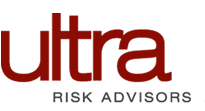“To write or to type?” That is the question. Actually, for everyone in the medical profession, the reality of the paper chart is slowly coming to a close. The digital age is moving forward at lightning speed. Electronic medical records (EMRs) are now a reality (also known as electronic health records or EHRs), not just a concept.
Believe it or not, there is a long line of medical providers that prefer a paper chart to a digital one. Nonetheless, physicians have realized that the transition to the digital world is going to happen no matter how they feel about it. If they had it their way, they’d request to be “grandfathered” into a provision exempting them from having to implement EMRs or EHRs. This way they can slowly fade into the dust without having to undergo the learning curve and the cost that comes with the move to electronic medical records.
Fortunately, most physicians are capable of transitioning into this new digital age of healthcare, and are (although sometimes begrudgingly) making the shift to the electronic world.
Making a mental adjustment
The first step is to embrace the change as it’s the way of the future. One way this can be done is by recognizing the benefits of making the change. It’s hard to draw any other conclusion than this – the benefits seem to far outweigh the costs of time and money to implement a new system.
An example of a comparison between paper charts and digital records.
Paper-based records require a significant amount of storage space compared to digital records. Not only do they take up a lot of space, but because we have to save the physical record for at least seven years they seem to pile up on each other exponentially.
Electronic media doesn’t require much physical space at all – and, typically electronic media costs less to store. This means that the room that you are currently using to store all your paper charts could be converted into a treatment room or other usable space that generates revenue.
Mental Note #1:
EMRs can help save room, treat more patients, and generate revenue.
How many times have you heard the statement “You write just like a doctor!” Physicians know the legibility issues that clinic staff have to deal with on a daily basis. What we don’t always recognize is the legibility issues on records and prescriptions contribute to medical errors, which can launch a domino effect of problems. EMRs takes the legibility issue out of the mix!
An EMR allows you to create a progress note without any mistake as to what you’ve written. You can also make more comprehensive progress notes with EMR which will help improve your medical coding and billing process. Closely documented progress notes equals better payer reimbursements, which means you actually get paid for the work you do!
Mental Note #2:
An EMR helps document patient’s needs better and can reduce the likelihood of paper chart related medical errors.
EMR can be beneficial in gathering information and tracking trends like never before. Tracking trends on paper is practically impossible.
With EMRs it only takes a few clicks of a button to access all the information you need because it’s right at your fingertips. The ability of the system to track and trend data is one of the best ways to help you see real time data that will enable you to implement changes to your practice by identifying trends quickly and as often as you like.
EMRs will help providers stay better informed on ways to treat patients and manage their long-term health. Maybe EMRs aren’t so bad after all?
A recent study done by the Medical Group Management Association (MGMA) shows 51% of groups with three or more physicians use EMR software.
The average EMR system is estimated to cost between $40,000- $50,000 to get started, and the price goes up from there if you want to have all the necessary equipment.
EMRs are here to stay and the best thing you can do is discover the most affordable and most time efficient manner of getting things running. It may be hard to see at first, but if you focus on the benefits that outweigh the cost and learning curve, you too can learn the new tricks of the trade with relative ease.







COMMENTS
No comments yet. You should be kind and add one!
The comments are closed.